Affordable Home Finds
That Look Expensive
Outfitting your place can be pricey. But we've found seven great finds that look like they cost you (but thankfully don't)
Design is more art than science—there aren't really hard and fast rules when it comes to outfitting your home. But when you're not a seasoned designer, you're bound to fall prey to misguided reflexes and rookie mistakes that keep your place from living up to its full potential. Here are five awkward blunders that can easily be remedied.
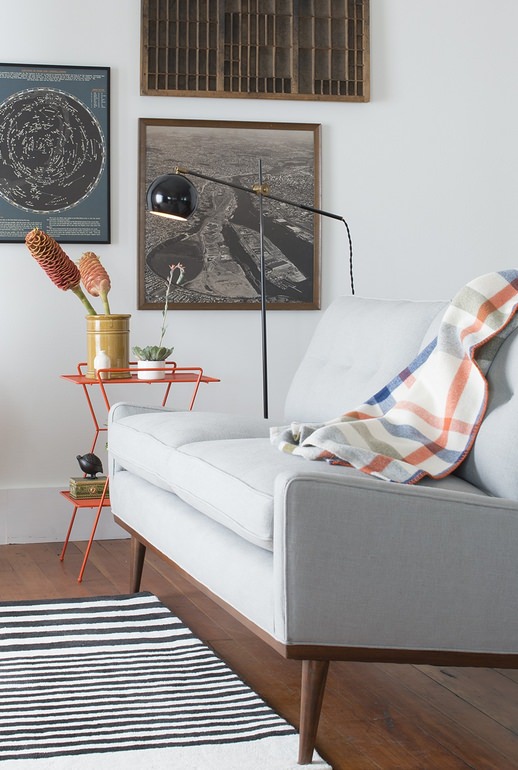
Underestimating
the lighting.
One of the most important things you can do for your home is to light it well. Relying solely on overhead lighting or a lone floor lamp tucked into a corner denies you the rich ambience of layered lighting. Pockets of light not only illuminate various areas of a room (thus making it look larger) the end result gives your place a grown up, sexy feel. Plus, the addition of lamps in a range of sizes adds some interesting structural elements to a room.
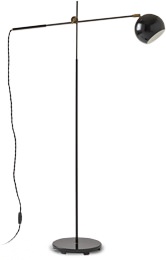
Studio floor lamp, $275 by Schoolhouse Electric
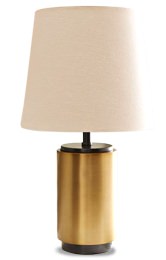
Small brass pillar lamp, $79 by West Elm
Buying everything from the same store.
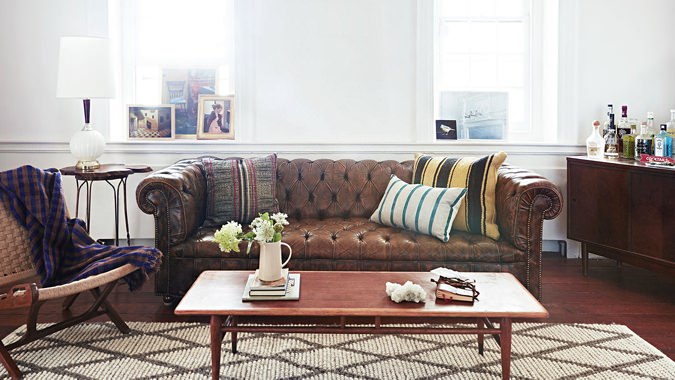
(Photo: Lonny)
There's nothing wrong with taking a few style cues from a store display or the page of a catalog. But when you buy everything from the same brand, you run the risk of your home looking like a generic hotel room. Think of it like your wardrobe—you want to mix and match pieces from different brands to create a personal look that suits your tastes and needs. This can be achieved by mixing complementary high-end and affordable pieces along with vintage finds.
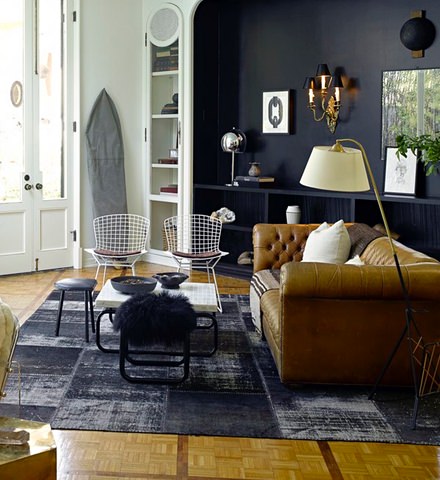
(Photo: Nate Berkus)
Lining the walls
with furniture.
When you're not confident in your decorating skills, it's common to push all your furniture up and against the wall. The thinking is that it makes the room seem bigger, but it can actually have the opposite effect. Whether you've got a cavernous loft space or a more claustrophobic apartment, you can make the space look more put together and functional by floating a few pieces of furniture within the room. Try setting a seating area on an angle and marvel at how it changes the whole look of your home.
Hanging art too high.
Many interior designers say that the only rookie mistake worse than not hanging art in your home is hanging it too high. Most frames should be hung eight to 10 inches above the furniture, and approximately five feet from the floor. This keeps the art at the ideal eye line for most people and maintains the correct proportions for a room.
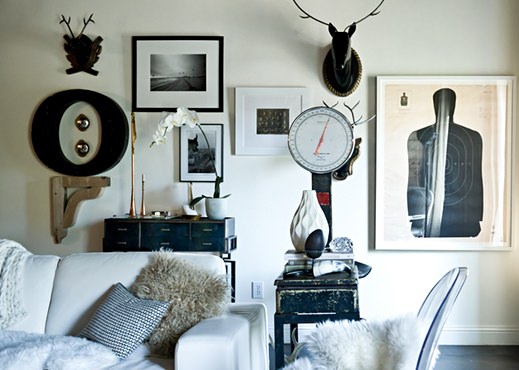
(Photo: Rue)
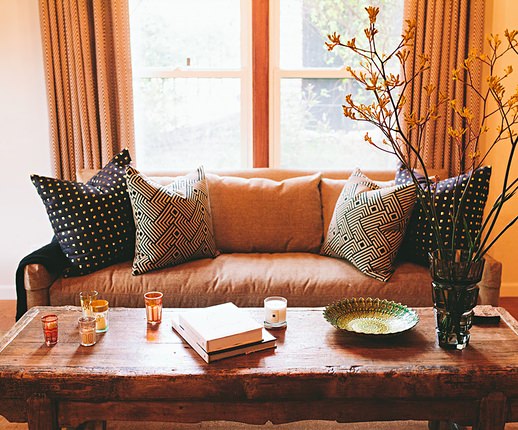
(Photo: WFord Interiors)
Forgetting the prints.
For many men, buying pieces for the home is a study in solid, neutral shades. And we get it. It's hard to see a bright color, bold ethnic print or intricate pattern on its own and imagine how it might work in your own place. But without it, a room is too safe and stale. The key is to start small—with a few accessories that you can add in bit by bit like throw pillows, a blanket on the end of a sofa and work your way up to an upholstered ottoman or a set of curtains.